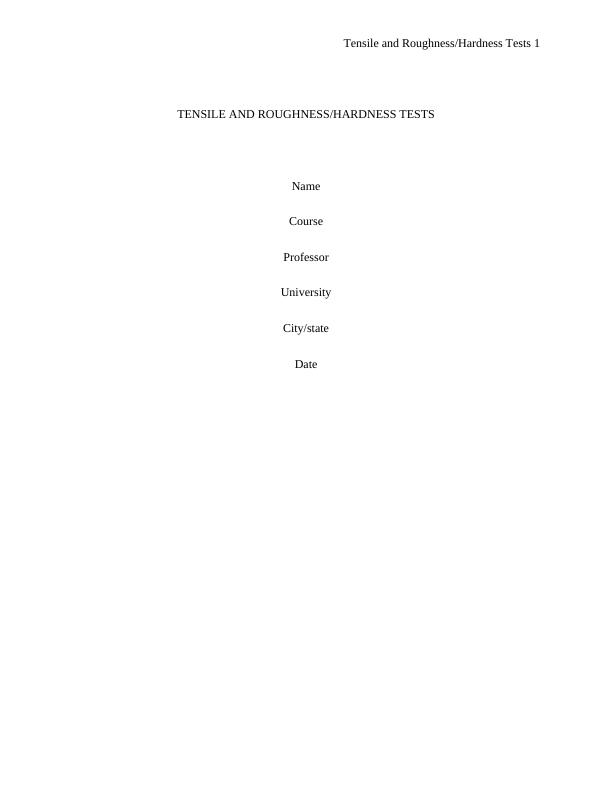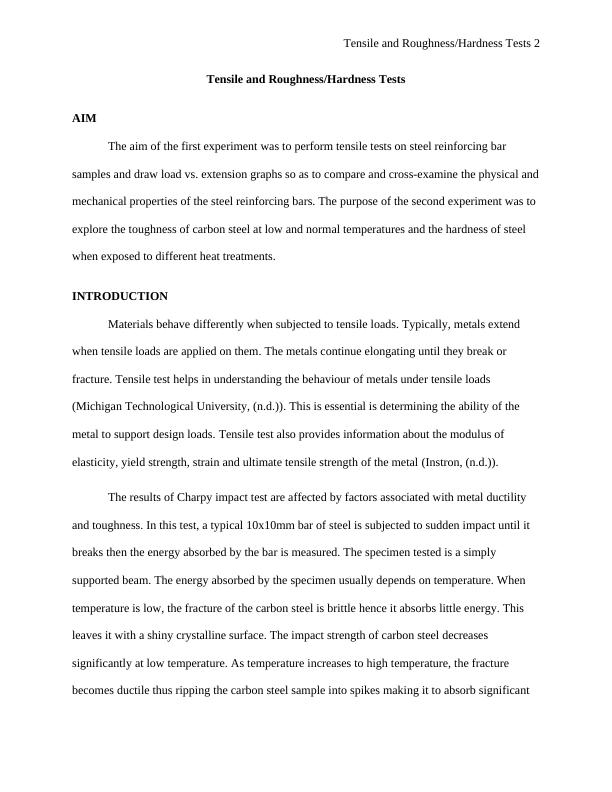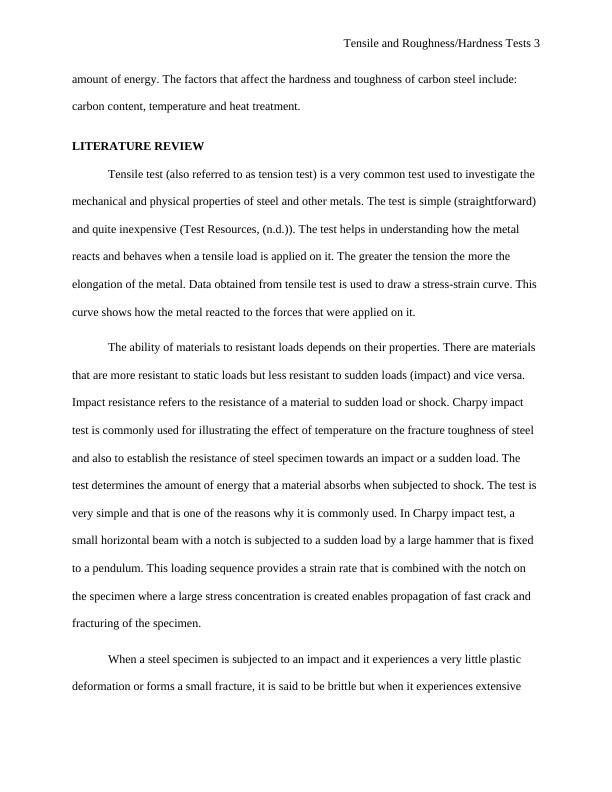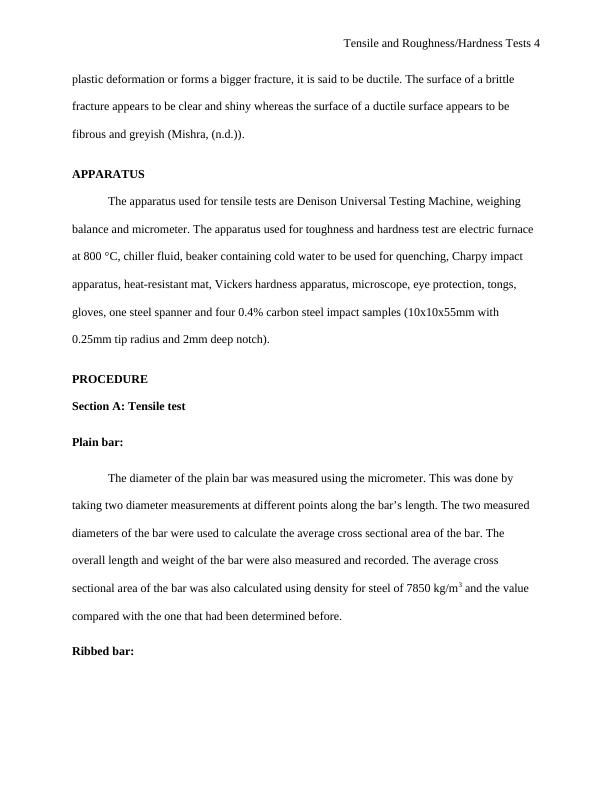Tensile and Roughness/Hardness Tests
To observe simple tensile tests on steel reinforcing bars and compare their mechanical and physical properties through the use of Load/Extension graphs.
17 Pages3384 Words64 Views
Added on 2023-05-30
About This Document
Perform tensile tests on steel reinforcing bar samples and explore the toughness of carbon steel at low and normal temperatures and the hardness of steel when exposed to different heat treatments. Understand the behaviour of metals under tensile loads and the factors that affect the hardness and toughness of carbon steel.
Tensile and Roughness/Hardness Tests
To observe simple tensile tests on steel reinforcing bars and compare their mechanical and physical properties through the use of Load/Extension graphs.
Added on 2023-05-30
ShareRelated Documents
End of preview
Want to access all the pages? Upload your documents or become a member.
Determining Mechanical Properties of 4140 Grade Steel Using Tensile Test
|7
|2187
|61
Hardening and Impact Testing
|7
|1451
|98
Hazardous agents Assignment PDF
|20
|3349
|54
Destructive and Non-Destructive Testing Methods in Engineering
|12
|1596
|414
Process cycle of Mild Steel
|9
|1650
|18
Training Booklet on Drive Shafts and Cosmetic Fittings
|21
|3871
|48




